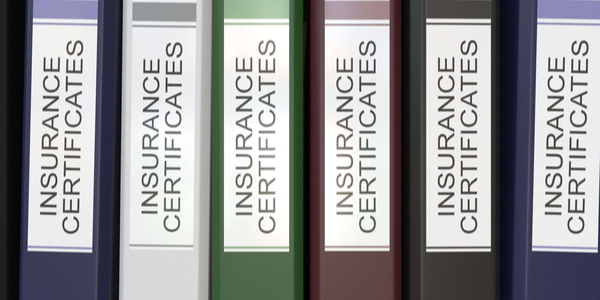A certificate of insurance (COI) is a document that can be presented by an insured as evidence to a third-party of being insured. It proves that an insurance policy has been written and outlines a statement of the extent of coverage of the policy in basic terms. A COI is simply a snapshot of the basic limits and policy coverages that were in place at the time that the certificate was issued.
These COIs cannot alter coverages or modify the terms of the insurance policy in any way. These certificates include the type of coverage, policy number, policy terms, limits, and carrier name, among other important information. COIs often suffer from omissions, errors, and false information, where the actual insurance coverage is misrepresented, which results in the insured suffering an uncovered loss when coverage was actually afforded in that situation.
One way to prevent possible errors from slipping through the cracks is to ask for supporting documents like endorsements, in addition to the COI itself. Upon receipt, you would need to review the endorsement for the correct names of the insured and check for additional insured endorsements, if any.
You would also need to verify whether the status of the insured falls under ongoing operations or completed operations. Ongoing operations refers to the insured having additional insured status while working, where the status is completed the moment they walk off the job site. Completed operations refers to the status of the insurance coverage when the work itself is completed.
Additionally, you would need to review the endorsements to verify whether they are attached to the insured’s existing policy and review blanket endorsements to verify whether they contain limiting language that may result in your company not being covered.
Although the certificate of insurance isn’t a substitute for the information contained in the actual insurance policy, it serves as a reliable proof of insurance coverage for the insured party. Therefore, as an important document that floats between the insured, insurers, and a number of third-parties, it is essential to ensure that there are no missing details that can prove to be potentially disastrous. Managing the certificates of insurance correctly would protect your company against costly litigations, underinsured claims, and failed audits.
Reliable third-party vendors are adept at helping insurance carriers and agencies mitigate risks associated with issuing COI. They specialize in documenting, flagging, reviewing, and managing valid COIs from third-parties.
Some of the ways in which third-party vendors can help reduce your liabilities include identifying and eliminating common errors such as using exact language to eliminate ambiguity and monitoring contractual agreement terms to ensure that they comply with the agreement that was signed between the additional insured, insurer, and issuer.
Finally, these vendors can also help carriers and agencies reduce their liabilities by ensuring that all the documents read alike, with no glaring inconsistencies, discrepancies, incorrect dates, or misspelled names or addresses.
Insurance Back Office Pro has proven expertise in handling and mitigating all the risks that are inherent in certificates of insurance. We prevent possible errors from occurring by obtaining the necessary endorsements to cross-verify the accuracy of the certificate of insurance and managing these certificates effectively to ensure that your business is always protected from litigations and underinsured claims.
If your business too is looking for a highly effective and dynamic solution to uncover all the underlying risks associated with your COIs, it’s time you partner with Insurance BackOffice Pro.






